Fiat Croma
At launch Fiat were proud to announce that the body contained only 321 parts, 53 metres
of sealing material were used and 43% of the body was made of galvanised parts whilst sixty-seven robots worked on the welding lines, and another eight
in the painting and assembly operations. Eleven body colours were available with three different types of interior trim (in a total of seven colours) plus
the optional leather upholstery. It should also be quoted from the launch press pack that "The car is also fitted for quadrophonic sound".
Initially it was available with 1585cc
(83bhp) conventional and 1995cc (90bhp) CHT units (using the 'Controlled High Turbulence'
system of two inlet manifolds of different diameters, used depending upon
engine speed) and two fuel injected 1995cc units, one with 120bhp (2.0ie)
and the other, turbocharged and intercooled, with 155bhp (turbo ie). Catalytic
converters were available on both the latter versions, whilst the 100ie
could also be fitted with a three-speed automatic transmission. Diesel
engines available at launch were a 2499cc unit with 75bhp and a 2445cc
turbocharged and intercooled unit with 100bhp. In 1988 a direct injection
1929cc diesel turbo (also intercooled) with 90bhp was added, the first
application of a DI engine in a passenger car.
1991 saw the second series Croma launched. Significantly redesigned, it had
its styling 'rounded-off' as well as new lights (front and rear), grille,
wheels and bumpers. A host of small mechanical changes were also made including
the adoption of a variable geometry turbo
on the 1.9 diesel and counter-rotating
balancer shafts on the 1995cc petrol engines, whilst the 1600 was discontinued. The interior was also heavily
revised, becoming plusher and more elegant, with a revised dashboard bringing it bang up to date.
These models lasted until 1993 when the
range was again revised. Externally little changed apart from another new
grille, whilst internally the instrumentation was revised. Ventilated discs
became standard at the front, bigger wheels were fitted and the 1995cc
normally aspirated unit got 16 valves, with the power increasing to 137bhp.
A 2492cc 12-valve sohc V6 unit was also fitted (an Alfa Romeo derived engine) with
159bhp. The latter version featured ABS, leather upholstery and air-conditioning as standard.
Production ceased in 1996.
The name was revived in 2005 with the launch of a new car, See the New Croma here.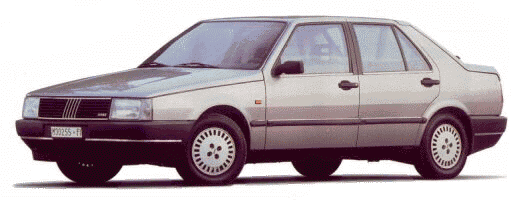 Entering production in 1985, the Fiat Croma was the result of joint work with Alfa Romeo
(the 164), Lancia (the Thema)
and Saab (the 9000). Only one bodystyle was produced, a five door saloon
with a drag coefficient of 0.32. Designed by Giugiaro, it combined the
conventional three-box saloon style with the practicality of a hatchback.
Entering production in 1985, the Fiat Croma was the result of joint work with Alfa Romeo
(the 164), Lancia (the Thema)
and Saab (the 9000). Only one bodystyle was produced, a five door saloon
with a drag coefficient of 0.32. Designed by Giugiaro, it combined the
conventional three-box saloon style with the practicality of a hatchback.
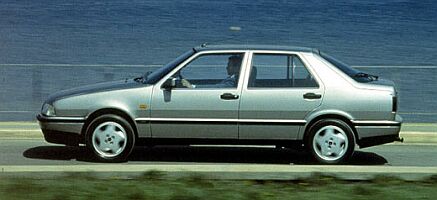 1989 saw some changes to the range. The
interior was improved, minor detail changes were made to the external design
and a four-speed manual gearbox became an option on the 100ie. The 2.5-litre
normally aspirated diesel engine was dropped, the 2.0CHT gained 8bhp (going
up to 98bhp) and the 2.4 turbodiesel became a 2.5 turbodiesel (capacity
up from 2445cc to 2499cc) with 116bhp.
1989 saw some changes to the range. The
interior was improved, minor detail changes were made to the external design
and a four-speed manual gearbox became an option on the 100ie. The 2.5-litre
normally aspirated diesel engine was dropped, the 2.0CHT gained 8bhp (going
up to 98bhp) and the 2.4 turbodiesel became a 2.5 turbodiesel (capacity
up from 2445cc to 2499cc) with 116bhp.
Technical Details
| Driveline | transverse engine at front with front wheel drive |
| Engines | at launch :
1585cc (84x71.5mm) sohc 4cyl with 83bhp @ 5,600rpm (Weber 32-34 DAT carburettor) 1995cc (84x90mm) dohc 4cyl (CHT) with 90bhp @ 5,500rpm (Weber 34 DAT carburettor) 1995cc (84x90mm) dohc 4cyl with 120bhp @ 5,250rpm (Weber IAW injection) 1995cc (84x90mm) dohc 4cyl turbocharged and intercooled with 155bhp @ 5,250rpm (Bosch LE2 Jetronic injection) 2499cc (93x92mm) sohc 4cyl diesel with 75bhp @ 4,200rpm 2445cc (93x90mm) sohc 4cyl diesel turbocharged and intercooled with 100bhp @ 4,100rpm later : 1929cc (82.6x90mm) sohc 4cyl diesel turbocharged and intercooled with 90bhp @ 4,200rpm (image) 2499cc (93x92mm) sohc 4cyl diesel turbocharged and intercooled with 116bhp @ 3,900rpm 1995cc (84x90mm) dohc 4cyl (CHT) with 98bhp @ 5,250rpm (Weber 34 DAT carburettor) 1929cc (82.6x90mm) sohc 4cyl diesel turbocharged (variable geometry) and intercooled with 92bhp @ 4,200rpm 2492cc (88x68.3mm) sohc per bank V6 with 159bhp @ 5,800rpm 1995cc (84x90mm) dohc 16v 4cyl with 137bhp @ 6,000rpm (Bosch Motronic injection) |
| Suspension | front : McPherson strut with telescopic dampers and coil springs plus anti-roll bar
rear : Independent transverse arms with trailing beams, telescopic dampers and coil springs plus anti-roll bar self-levelling rear suspension was available as an option on some versions wheelbase : 2660mm track (front/rear) : 1482mm/1472mmm (turbo : 1494mm/1484mm) |
| Brakes | front : discs, diameter 257mm (ventilated on some versions)
rear : discs, diameter 251mm handbrake operating on the rear via a cable ABS optional on some models |
| Gearbox | 5 speed manual
3 and 4 speed automatics dry, single plate clutch, diameter from 200mm (1600) to 230mm (2.0 turbo and 2.4 TD) |
| Steering | Rack and pinion
hydraulic power assistance standard on all versions except the 1600 lock-to-lock : 4.6 turns (1600 & 2000), 3.2 (2.0 turbo & diesels) |
| Empty weight | 2.0 CHT : 1110kg (59% front / 41% rear)
2.0ie : 1120kg (59.5% front / 40.5% rear) turbo ie : 1180kg (61% front / 39% rear) 2.4TD : 1240kg (64.6% front / 35.4% rear) 1.9TDI : 1200kg (61.8% front / 38.2% rear) 2.5ie V6 : 1320kg |
| Dimensions | external and
internal
Boot capacity : 500dm3 (rear seats up) to 1400dm3 (rear seats flat) |
Click
here for a cutaway drawing of a Fiat Croma
Performance
| model | max speed | 0-100km/h | standing km | braking dist from 100km/h |
| 2.0ie turbo (1987) | 214 km/h | 8.1 sec | 29.4 sec | 46.0 m |
| 1.6 (1987) | 171 km/h | 34.7 sec | 45.9 m | |
| 2.5 TD (1989) | 195 km/h | 11.4 sec | 32.8 sec | 44.5 m |
| 2.0ie (1989) | 199 km/h | 10.1 sec | 31.6 sec | 41.2 m |
| 2.0 CHT (1989) | 185 km/h | 11.5 sec | 33.0 sec | 45.2 m |
| 2.0ie turbo (1991) | 224 km/h | 7.7 sec | 28.8 sec | 41.7 m |
| 1.9 TDi (1991) | 180 km/h | 12.3 sec | 33.9 sec | 43.8 m |
Tuning
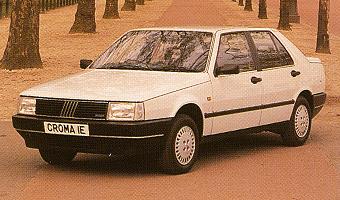 There are three main areas to concentrate
on, the engine (and transmission), the brakes and the suspension and then
various other details. These three should be done together since they complement
each other, not all of one and none of another !
There are three main areas to concentrate
on, the engine (and transmission), the brakes and the suspension and then
various other details. These three should be done together since they complement
each other, not all of one and none of another !
1. The engine.
Before modifying the engine it is worthwhile
filling it with a good quality synthetic oil and fitting new spark plugs.
An engine oil additive may also be used.
The first improvements are relatively simple.
The air filter can be replaced for an aftermarket item which will help the
engine breathe more freely, the types which completely replace the airbox
are best, and the exhaust can be replaced for one which will restrict the
exit of the gases less. Replace the whole system, not just the back box.
On those cars with electronic injection
and ignition, probably the most effective modification (short of engine
rebuilds!) is to replace the electronic control unit (or 'chip'). For the
Croma availability of off-the-shelf units is not good, so useage of a unit
designed for any engine
is required which will mean some programming and useage of a rolling road.....
On other cars (and also a possibility on
electronically controlled cars) the best option is to fit larger carburettors
- preferably two twin units, giving one venturi per cylinder. Sidedraught
DCOE's are popular for this engine and will provide a good increase in
power (as well as a major increase in fuel consumption!). A camshaft change
will also significantly improve the power and torque, but attention must
be paid to the characteristics since some camshafts, usually those with
the best absolute figures, are not very driveable except on a race circuit.
On the Croma turbo's the job of increasing
the power is even easier, fitting a bleed valve will result in significant
gains, but do not be tempted to raise the boost pressure too far or the
fuelling will not be able to cope and the engine will run weak. Water spray
on the intercooler is also worth considering, switched by either an air
temperature sensor (the ideal solution) or bay a MAP sensor (the easy solution).
Consider also adding an octane boosting product to the fuel on cars with
increased boost levels, it will help the ignition cope.
Further modifications require the machining
of the cylinder headand/or cylinder block (which will not be dealt with
here since it is not normally a DIY job) after which it may be worth fitting
an oil cooler. If overheating is a problem due to the increased power output
then a small hole can also be drilled through the plate in the thermostat.
Regarding the transmission the main requirement
is to uprate the clutch to handle the increase in power and torque achieved
though the engine modifications. Friction plates can be purchased with
improved materials and heavier duty pressure plates are also available.
Whilst doing this it is worthwhile lightening the flywheel.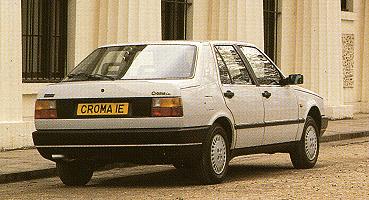 Other things to do should include fitting
a cold air intake, a large diameter pipe (minimum 5cm) to provide air from
outside the engine bay to the air filter. The exhaust manifold can also
be lagged with thermal cloth or tape to keep the exhaust gases hotter (and
thus reduce back pressure) and also to keep the underbonnet (and hence
intake and fuel) temperatures lower.
Other things to do should include fitting
a cold air intake, a large diameter pipe (minimum 5cm) to provide air from
outside the engine bay to the air filter. The exhaust manifold can also
be lagged with thermal cloth or tape to keep the exhaust gases hotter (and
thus reduce back pressure) and also to keep the underbonnet (and hence
intake and fuel) temperatures lower.
The high tension leads can also be replaced with performance ones.
2. The brakes.
Initially it is relatively easy to replace
the brake discs with drilled and grooved items, and the pads for a harder
compound. The latter should not be too hard (ie no race pads on the road)
or they will not function effectively at the normal 'road' operating temperatures.
Stainless steel braided flexible hoses will improve the pedal feel and
reduce the chance of damage whilst DoT5 fluid (not silicon) will increase
the temperature at which it can operate effectively. If the brakes are
getting too hot the dustguards can be removed and/or If more serious braking is required the
next modification would be to increase the disc size. It is possible to
use larger discs with a bracket allowing use of the production callipers,
or alloy four pot callipers can be fitted.
In order to improve the balance of the
car under braking it is desireable to be able to adjust the balance of
braking from front to rear (and vice versa). This can be accomplished by
fitting a bias valve in the line to the rear brakes, usually in a position
so that it can be reached from the drivers seat.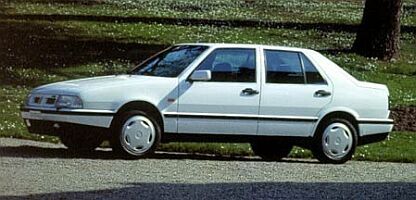 ducts
fitted, taking air from behind the front bumper.
ducts
fitted, taking air from behind the front bumper.
3. The suspension.
The easiest improvement,and the one which
will probably bring the single most noticeable change, is to replace the
full set of dampers and springs. A variety of kits are available which
include four matched dampers and springs. Top adjustable units are compromised,
but are good for road and track day cars since it allows the suspension
to be adjusted between these two, rather different, requirements. Coil
over units add more adjustability and can be purchased outright, or can
be made from standard dampers by welding a threaded sleeve to the standard tube.
There are then two other main suspension
aims; to reduce the flexiblity in the suspension and to increase the stiffness
of the car, both of which aim at more accurate control of the wheel movement.
To reduce the flexibility it is possible to fit nylon bushes instead of
the normal production rubber items, or if perfection is desired the suspension
can be fitted with metallic bearings (rose joints / rod ends). Spherical
bearing top mounts can also be used. To stiffen the car it is most popular
to fit strut braces. These can be fitted to the front and rear. For more
extreme cases a rollcage can be fitted.....
Into this category also fall the choice
of wheels and tyres. With an increase in power it can be necessary to fit
larger tyres (thus requiring larger wheels) but the temptation to fit the
biggest possible should be resisted. Consideration should be given to fitting
a wider tyre on the front (since they provide traction and steering) but
keeping the standard, or a wider but not as wide as the front, tyre at
the rear. This will improve the balance of the car.
4. other things.
Other modifications worth considering include fitment of a shift light (and rev limiter if there is not one as standard), higher power bulbs in the headlights (if you are going to go faster you need to see further) and installation of a quicker steering rack.
Buying / Selling
Some tips to do before selling :
(they may seem obvious, but most people don't do them and thus are in a weaker bargaining position)
Tidy inside the car thoroughly : hoover
the floor, empty all pockets, ashtrays (wash), glove compartment etc...,
wipe the trim with a damp cloth, give the cockpit a good airing to get
rid of any odours ! Reset the trip meter to 00000 - it is a pleasant (subconcious) surprise.
If the car has been standing give it a
good run - this will clear out the engine (reduce exhaust smoke), put a
shine on the brake discs and loosen up any joints that may otherwise make some noises.
'Back to black' products are very effective
at temporarily restoring bumpers and trim. This makes a big difference
to any car. Do it a week before you expect people to view the car, otherwise it may be a bit too obvious !
Jetwash under the car, especially under
the engine and in the wheelarches. The prospective buyer may be an enthusiast,
and this makes it easier for them to see what they want to check.
Obviously wash the car and clean the windows !
If you are going to buy a car always check the following :
The bodywork should not be a major issue,
but check around just in case. The wheelarches, suspension and engine mounts,
sills, door pillars, scuttle panel and the floor can be easily inspected.
If a sunroof is fitted check around the edge. Check that there are no mismatching
panels, large areas of discolouration or signs of fresh paint. Compare
the paint colour in the engine bay with that of the exterior.
Check the main electrical functions - wipers,
windows, lights etc... try putting the main beam and wipers on at the same
time. Check the headlight reflectors for rust and the glass for cracks.
Check the brake pedal does not go to the
floor if pressed hard for a long time and check the gearchange for clean engagement.
The engine should be run up to temperature,
check the exhaust for smoke (especially on the turbo models), the condition
of the breather (look for mayonaise), the condition of the oil filler cap
(again white deposits can indicate a head gasket problem...) and the colour
of the coolant (preferably not brown!). If the car has an oil pressure
guage this should not drop below 1 bar at idle, and should be around 3
to 4 bar at speed. Listen to the noise of the engine, then depress the
clutch and engage first gear. Whatever noise has disappeared was coming
from the gearbox, what remains is from the engine. Check the condition
of the engine oil using the dipstick. It should be a lovely golden
-brown, darker is also ok but avoid the black stuff (except in dieels where this is the norm).
Check tyre wear, uneven patterns could imply a bent chassis.
Always take it for a test drive. Check
that the car tracks in a straight line with no steering input. Find a large
open area and complete several lock to lock turns (also in reverse), listening
for any noises. Try the handbrake when moving - seized rear callipers will mean uneven braking or no braking.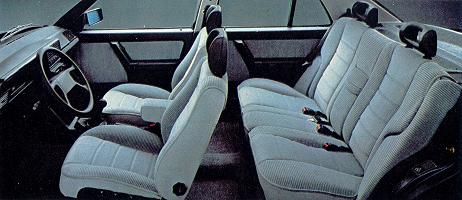 The
Croma offers excellent value for money. Much underrated, the value of second
hand cars is now very,very low and they offer lots of space, a reasonable
level of luxury, and in 16V or turbo form, a lot of go.
The
Croma offers excellent value for money. Much underrated, the value of second
hand cars is now very,very low and they offer lots of space, a reasonable
level of luxury, and in 16V or turbo form, a lot of go.
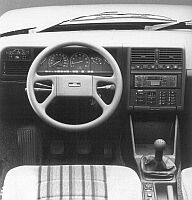 Check
for a damp carpet or the presence of mould - if the carpet is damp then
the floor is almost certainly corroded.
Check
for a damp carpet or the presence of mould - if the carpet is damp then
the floor is almost certainly corroded.
Links
A private Fiat Croma website
Another private Fiat Croma website
For books on Fiat see our Online Bookstore
There is also a list of all our picture galleries (including museums, motorshows and various events).
Wallpapers/Desktop Backgrounds of numerous Fiats also available to download.
Croma comment form
Your Comments
I have 1992 TDdi Croma, and
I´m very happy about the car. The only thing that I don´t like
is the suspension, the is very false from rear. Except, it is a good, it
has top equipement, and makes 6/7 litres /100 km. (Andre C., Portugal)
Hello! I have a 1992 Fiat Croma Turbo i.e with 153 hp and about 78000 km. It is a great car, safe,
fast, confortable and it is even best in dynamic behavior than other models
on the same level. However, the Croma it´s heavy (about 1,3Ton),
and 153 hp extracted from a 2000 cc engine, and 7,9 seconds from 0 to 100
km/h demands a large consumption of Gas. Greats to all Croma Fans! (José G, Portugal)
Hi,in 96-98 i had '87 Croma i.e. It was realy good car for driving pleasure. I had some problems with
it, becouse previos owner not very care about it, but as I say, I enjoyed
to drive it : good suspension, good dynamic for such engine and weight,
good consumption... (Mr.Speed, Lithuania)
The simply tremendous machine! Excellent(different) dynamic characteristics. Especially it is necessary to note machines with the
diesel engine (on mine, best in a class). Perhaps, unique defect is the low landing(planting) of the automobile,
that is rather unsuccessful for the Russian roads. (L:C; Russia)
I buy my Croma in november 1991,it is a 1900TDid.The car has 266000km now and drive like the first day. (Danny, Belgium)
Hi, I am Mr. Niels J from Denmark,I have got a Croma 2,0 ie S `95. its my 3. Croma. one from `88, ´91 and now `95. I think its a great car, have driven 250.000 miles ... I look forward to the New Croma on the marked in 2002.
I have a 2001 2.0tie croma. It very exciting to drive this car.
At this time, the car is 175.000 km, but it is like new.
Leather seats, 158cv, automatic air conditioning, electric rear-view mirrors, abs, 0-100 in 7,6 sec,... incredible for a 1991 car in it's level. Great car. (Issus, Spain)
Hi everyone! We own a beautiful Croma 2.0 T.i.e. 1995, I have to tell you I was recently asked to sell it to a disappointed new-alfa owner! I couldn`t believe it, but I am aware of it.
This is a highly reliable car, but extremely underestimated - I will drive it as long as possible!
I have Croma turbo ie 1988 and 380 000km. Engine, gearbox and turbocharger are orginal and never repaired. Consumption ~7l/100km. Great car, thanks fiat. (Flex, Finland)
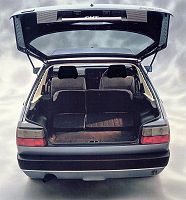 Hi, I own a 1986 Fiat Croma Turbo. I like this car for many reasons. It has more than enough power
for most driving applications. Its actually quite fast for a big car. Cromas
can do very high milages without any major problems. The trend at the moment
puts the Croma out of the desirable list meaning that you can get a Croma
very cheep. Parts are easy to find. And the best thing is that this car
is very nice to drive. There are a few things that I dont like, it has
very soft suspension, it does not handle that well. The turbo model sucks down gas easily.
Hi, I own a 1986 Fiat Croma Turbo. I like this car for many reasons. It has more than enough power
for most driving applications. Its actually quite fast for a big car. Cromas
can do very high milages without any major problems. The trend at the moment
puts the Croma out of the desirable list meaning that you can get a Croma
very cheep. Parts are easy to find. And the best thing is that this car
is very nice to drive. There are a few things that I dont like, it has
very soft suspension, it does not handle that well. The turbo model sucks down gas easily.
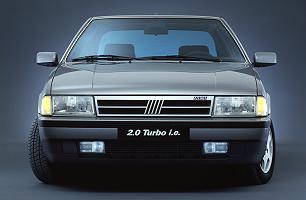 Hey, we have a Fiat Croma turbo i.e, and I cant understand that there is just 155 hp in it... it is an extraordinary car.
Hey, we have a Fiat Croma turbo i.e, and I cant understand that there is just 155 hp in it... it is an extraordinary car.
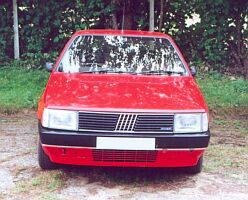
Use the buttons at the top to navigate further, or
Copyright © 2000 to 2008 CarsfromItaly